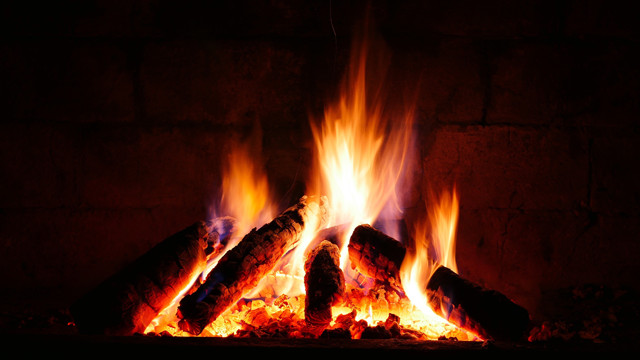
by Ward Chesworth Tuesday, July 3, 2018

Credit: Pexels.com/pixabay; CC0 License.
Do you remember when we used to cook our veggies? It was before the French invented “La Nouvelle Cuisine” and had us eating everything raw like Homo erectus. No surprise, then, that it was a Frenchman, Claude Lévi-Strauss, who in 1964 published “The Raw and the Cooked,” a classic of anthropology. He proposed that opposites, such as raw and cooked, “drawn from everyday experience with the most basic sorts of things … can serve a people as conceptual tools for the formation of abstract notions and for combining these into propositions.” Well, all I know is that when we started eating our grub cooked rather than raw was a significant turning point in human history — though the real turning point was the control of fire. And H. erectus was the first to manage that.
Lightning strikes were starting fires long before H. erectus came along, but they were the ones who first put it to use. They used it to keep scary animals at bay and set forests alight to stampede animals into the arms of hunters. And it’s easy to imagine a family clustering for warmth and safety around a hearth after a day of hunting and scavenging. Fire would have been handy in the migration out of Africa, particularly into more northerly climes still gripped by an ice age. The first hominins to use fire probably couldn’t yet generate fire from scratch, and so would have needed a “keeper of the flame” to carry fire to new hearths.
When Homo, as a genus, began routinely cooking with fire is debated — hotly, you might say. Circular patches of baked clay, edged by stones and littered with plentiful scorched animal bones, are some of the first clear signs of cooking by H. sapiens about 40,000 years ago. Cooking made many foods more palatable and digestible, thus considerably increasing our resources for survival. Heating breaks down membranes and cell walls to make it easier for gastric processes to extract vitamins and nutrients. Think of cereal grains: They are intrinsically difficult to eat. Yet boil rice or bake wheat flour into bread and you can support armies and create empires, as the Chinese, Persians and Romans notably did.
Nowadays we produce fire on demand and no longer need to preserve a burning coal to start a new fire. Striking a spark from a hard rock such as flint would have been one of our earliest ways to develop a portable way to light a fire. I remember dear Miss Armitage telling us in Grade 1 that we could start a fire this way within a minute. I never could until I found my dad’s Ronson lighter, which brought together flint and striker with great efficiency.
There seems little doubt that setting fire to forests and grasslands was the earliest way that humans learned to modify the landscape in a big way. It’s now well recognized that the Aboriginal people of Australia were altering the landscape with fire as far back as 40,000 years ago. Originally, the idea may simply have been to create woodland clearances to make hunting easier. Brown falcons and black kites, two species regularly seen hunting at the edges of grass fires in Australia, have been observed picking up bits of smoldering vegetation and carrying it to new locations to spread fire to areas where frogs, lizards and snakes have hidden for safety. When the prey bolts, it is easily picked off. If any of the animals get caught in the fire, they become a “cooked” meal for later scavengers, which may have been how early humans encountered roast meat for the first time.
This brings me to Charles Lamb’s 1823 essay, “A Dissertation Upon Roast Pig,” in which the author paraphrases a Chinese manuscript in asserting that we ate meat raw “for the first seventy thousand ages” of our history. Then, in ancient China, a “lubberly boy … fond of playing with fire” managed to burn the house down in the absence of his parents. Nine pigs trapped inside were roasted alive. Their remains were found covered in that delicious saturated fat we call “crackling.” The boy tasted it and became instantly addicted, as did his dad and eventually their neighbors. Soon everybody was herding their pigs indoors before burning the house down. Consequently, the price of houses and pigs skyrocketed, and the national economy wasn’t stabilized again until some genius invented the kitchen stove.
So, there’s a 19th-century precedent for the idea that the first human cooks were pyromaniacs who learned that burning something down was a great way to get a cooked meal. It wasn’t inspired by some lubberly lout, however, but rather by indigenous birds. As a nod to Alfred Hitchcock, I’ll call it my “by the birds” hypothesis. Of course, change a preposition and the idea might be revealed simply as one “for the birds.”
© 2008-2021. All rights reserved. Any copying, redistribution or retransmission of any of the contents of this service without the expressed written permission of the American Geosciences Institute is expressly prohibited. Click here for all copyright requests.